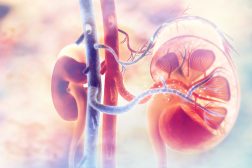Bioaccumulation
– a general term for the accumulation of substances, such as pesticides (ddt is an example), methylmercury, or other organic chemicals in an organism or part of an organism. The accumulation process involves the biological sequestering of substances that enter the organism through respiration, food intake, epidermal (skin) contact with the substance, and/or other means. The sequestering results in the organism having a higher concentration of the substance than the concentration in the organism’s surrounding environment. The level at which a given substance is bioaccumulated depends on the rate of uptake, the mode of uptake (through the gills of a fish, ingested along with food, contact with epidermis (skin), …), how quickly the substance is eliminated from the organism, transformation of the substance by metabolic processes, the lipid (fat) content of the organism, the hydrophobicity of the substance, environmental factors, and other biological and physical factors. As a general rule the more hydrophobic a substance is the more likely it is to bioaccumulate in organisms, such as fish. Another way of saying this is that bIOACCUMULATION of a substance is correlated to the octanol-water partition coefficient (KOW) of the substance. Increasing hydrophobicity (lipophilicity) leads to an increasing propensity to bioaccumulate. Some substances do not conform to this relationship, such as methlymercury. Methlymercury accumulates in fish to a much greater degree than methlymercury’s KOW would indicate.
A related term is bioconcentration. Bioconcentration differs from bIOACCUMULATION because it refers only to the uptake of substances into the organism from water alone. Bioaccumlation is the more general term because it includes all means of uptake into the organism.
source: http://toxics.usgs.gov
Dictionary > BIOACCUMULATION
You will also like...

New Zealand’s Biodiversity
Find out more about New Zealand's unique biodiversity by exploring a range of different ecosystems and the key role of s..

Human Biology – Food and Digestion
This tutorial recognizes the importance of food as a source of energy that will fuel many biological processes. A good d..

Protein Activity and Cellular Metabolism
Proteins have a crucial role in various biological activities. Get to know how proteins are able to perform as enzymes, ..

Chromosomes X and Y and Sex Determination
This tutorial looks at sex determination via the sex chromosomes, X and Y. Read it to get more info on X and Y chromosom..

Homeostasis of Organism Water Regulation
Osmoregulation is the regulation of water concentrations in the bloodstream, effectively controlling the amount of water..

Plant Metabolism
Plants are responsible for incredible feats of molecular transformation. Plant processes, such as photosynthesis, photop..

